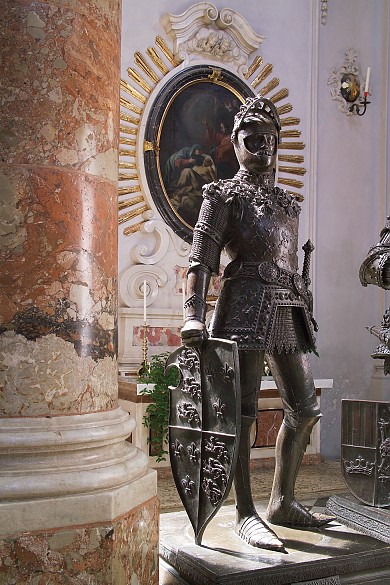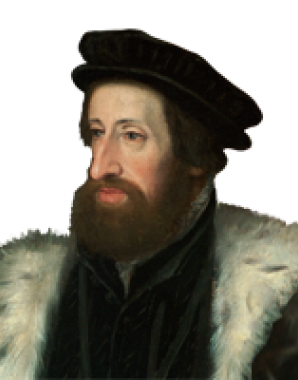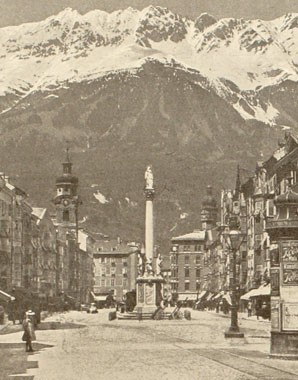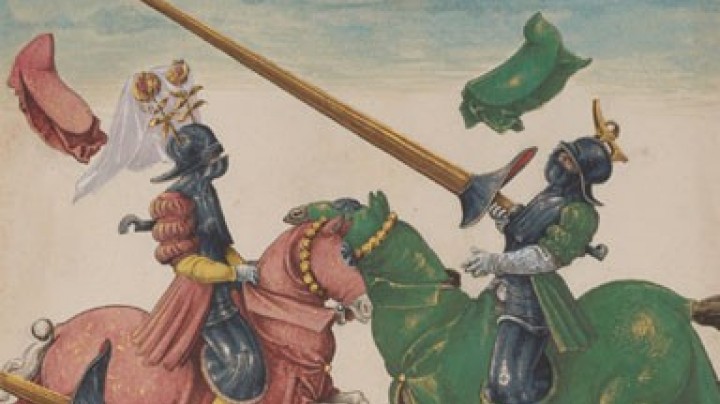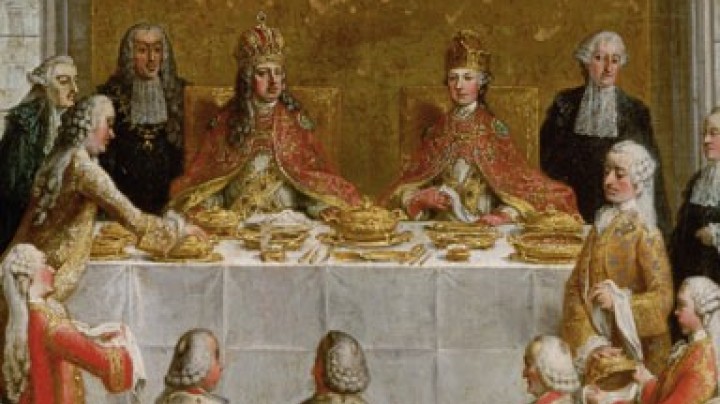28 The ‘Black Men’ and an emperor
It took almost eighty years to erect Maximilian I’s tomb and was a project that was still occupying his grandsons. Today it stands in the Court church at Innsbruck and is referred to in Tyrolean dialect as the ‘Church of the Black Men’, after the bronze mourning figures grouped around the cenotaph, even though they include a number of women.
The idea of a stately tomb came from Emperor Maximilian I himself. Humanist scholars helped him to design a suitably sumptuous monument: the emperor kneels on an elevated sarcophagus, its sides faced with marble reliefs depicting his exploits. The monument was intended to be surrounded by forty bronze statues of his ancestors (both actual and imagined), predecessors and role models, such as King Arthur and Dietrich von Bern, together with one hundred smaller bronze figures representing the Habsburgs.
The design represents a combination of classical tomb and medieval funerary cortege and is symptomatic of Maximilian’s concept of art, which sought to revive classical ideals while remaining bound to medieval traditions. The monument was intended to glorify the Habsburgs and legitimize their imperial status by referencing the Roman emperors and their tombs, while the figures, for example the statue of Charles the Bold, referred to the emperor’s knightly forebears.
Although the design and casting were executed by artists from Innsbruck, Peter Vischer the Elder, who had a famous bronze-casting workshop in Nuremberg, was also involved in its making.
Like many of monuments initiated by Maximilian, the tomb remained unfinished due to lack of funds and the emperor’s constant journeying. Two of the figures were even impounded by the Bishop of Augsburg and not redeemed until 1580. The only enduring examples of Maximilian’s patronage of the arts are printed works.
The project was eventually continued by Maximilian’s grandson, Ferdinand I: only eleven of the forty statues planned – each measuring more than 2.40 m – had been completed by the time Maximilian died. Today twenty-eight schwarze Mander survive. Ferdinand I determined that the tomb should be erected in Innsbruck, even though his grandfather was buried at Wiener Neustadt. The court church at Innsbruck was built specially to accommodate the cenotaph. The church also contains the tomb of the Tyrolean freedom fighter Andreas Hofer, and in the adjoining ‘Silver Chapel’ is the tomb of Archduke Ferdinand of Tyrol and his commoner wife, Philippine Welser.





